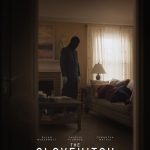The Wind That Shakes the Barley (2006)
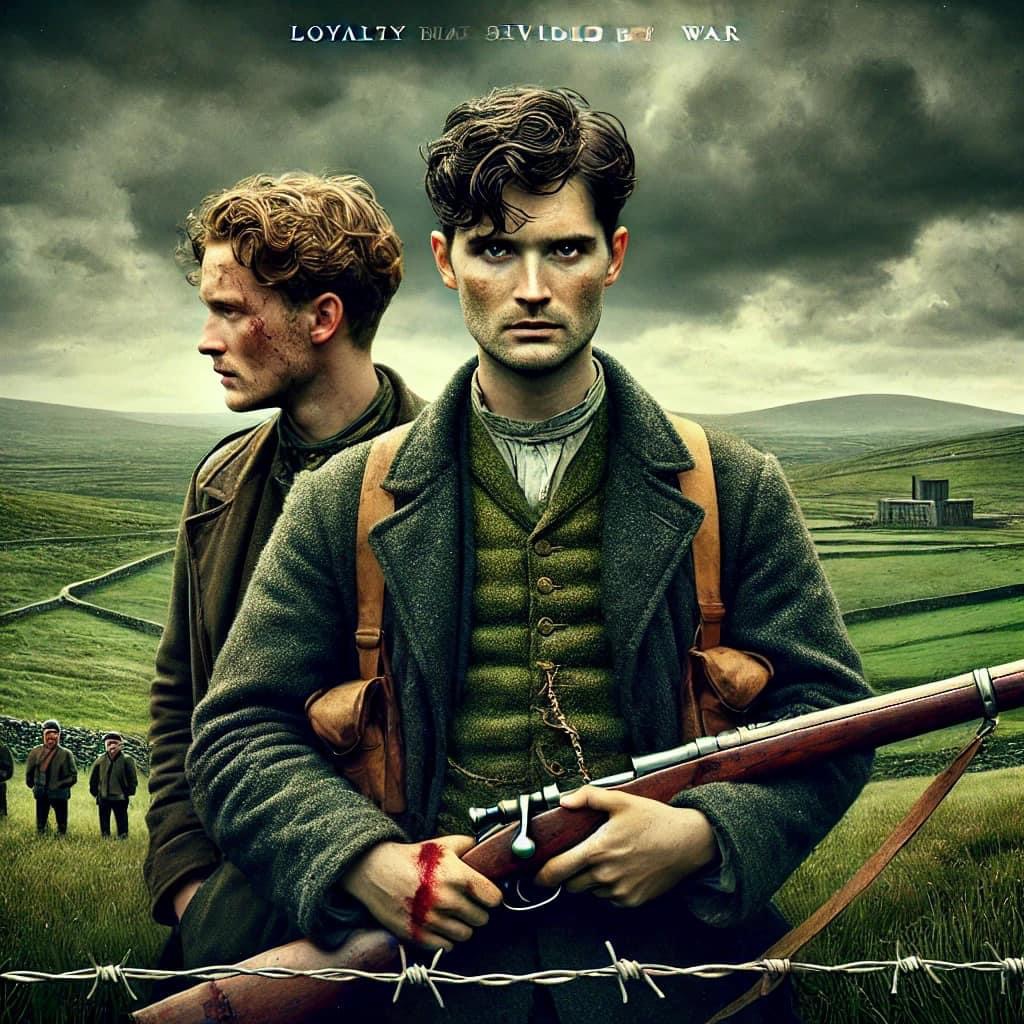
The Wind That Shakes the Barley (2006), directed by Ken Loach, is a powerful historical drama set against the backdrop of the Irish War of Independence (1919-1921) and the Irish Civil War (1922-1923). The film stars Cillian Murphy and Padraic Delaney as two brothers who, though united by their commitment to Irish independence, ultimately find themselves on opposite sides of a brutal conflict. With its nuanced portrayal of loyalty, sacrifice, and the painful cost of freedom, The Wind That Shakes the Barley explores both the intimate and expansive dimensions of the Irish struggle for independence.
Suggested videos for you:
Plot Summary
The story opens in rural County Cork, where Damien O’Donovan (Cillian Murphy), a young medical student, is preparing to leave Ireland for a prestigious job in London. However, after witnessing a series of violent acts by British forces, including the killing of a friend, Damien decides to stay and join his brother Teddy (Padraic Delaney) in the Irish Republican Army (IRA). Together, they engage in guerrilla warfare against the British forces and advocate for an independent Ireland.
When the Anglo-Irish Treaty is signed in 1921, granting limited independence to Ireland but maintaining British dominion over the country, the brothers’ paths diverge. Teddy supports the treaty, believing it is a step toward peace and progress, while Damien rejects it, seeing it as a betrayal of the republican cause. Their differing views propel the film into its most intense sequences, as brother fights brother, and the film crescendos toward an emotional and tragic conclusion.
Direction and Cinematography
Ken Loach, known for his realist approach to filmmaking, brings a deeply grounded and authentic vision to The Wind That Shakes the Barley. Filmed almost entirely on location in the Irish countryside, the natural landscape of rural Ireland is both beautiful and haunting, contrasting the serenity of the fields and hills with the brutal violence that disrupts the peace. The cinematography by Barry Ackroyd captures the somber, rain-soaked countryside in muted tones, giving the film a raw, almost documentary-like feel. The quiet beauty of the Irish landscape becomes a constant reminder of what is at stake and what the characters are fighting to protect.
Loach’s direction is marked by his commitment to realism and his respect for historical accuracy. He emphasizes the everyday struggles of the Irish people—their routines, relationships, and the impact of the conflict on their lives. The film often uses natural lighting, handheld cameras, and long takes, allowing the audience to feel immersed in the period and lending an almost lived-in quality to the scenes.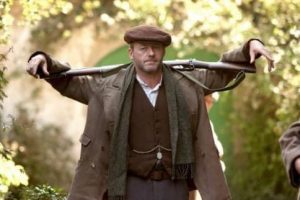
Performances
Cillian Murphy delivers a career-defining performance as Damien, portraying a character torn between his initial pacifist ideals and his eventual commitment to violent resistance. Murphy brings a quiet intensity to the role, capturing Damien’s inner conflict as he transforms from a compassionate young man into a hardened revolutionary. His evolution throughout the film—from a reluctant fighter to someone who is willing to make the ultimate sacrifice for his beliefs—is both heartbreaking and inspiring.
Padraic Delaney’s portrayal of Teddy is equally compelling. Teddy is a pragmatist, choosing what he believes to be a practical compromise to end the bloodshed, even if it means compromising some of his ideals. Delaney and Murphy’s chemistry, along with their contrasting portrayals of the O’Donovan brothers, provides the emotional core of the film. Their bond makes their eventual divide all the more painful, and their performances illustrate the deep personal costs of civil conflict.
Supporting actors, including Liam Cunningham as IRA commander Dan and Orla Fitzgerald as Sinead, Damien’s love interest, add further depth to the story. Cunningham brings wisdom and gravitas to his role, while Fitzgerald’s performance as Sinead embodies the resilience and suffering of those caught in the crossfire.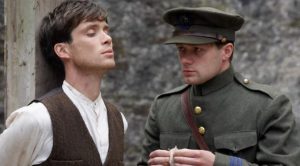
Themes and Tone
The Wind That Shakes the Barley is more than a historical account; it is a meditation on the ethics of violence, the nature of freedom, and the heartbreaking toll of ideological divides. One of the film’s central themes is the question of what it means to fight for independence and whether the ends justify the means. Through Damien and Teddy’s opposing views on the Anglo-Irish Treaty, Loach examines the complex moral and philosophical dilemmas faced by those fighting for a cause.
The film also emphasizes the tragedy of civil war and the personal cost of ideological division. The brothers’ relationship symbolizes the unity of Ireland before the split, and their separation underscores the pain of a country divided against itself. The film doesn’t shy away from depicting the brutal realities of war—the betrayals, executions, and loss of innocent lives—and it forces the audience to confront the tragic inevitabilities of revolution.
Realism and Historical Accuracy
Ken Loach is known for his commitment to social realism, and The Wind That Shakes the Barley exemplifies this approach. The dialogue is authentic, often delivered in Gaelic as well as English, which emphasizes the cultural stakes of the struggle. Loach and screenwriter Paul Laverty conducted extensive research to capture the experiences of rural Irish communities during this turbulent period, portraying the dynamics within the IRA and the tensions between local and British forces.
The film’s portrayal of the Black and Tans, a paramilitary force recruited by the British government, is particularly harrowing. The Black and Tans were infamous for their brutal tactics, and Loach does not shy away from depicting their violence, which serves as a catalyst for Damien’s radicalization. Although some have criticized the film for its portrayal of the British forces as one-dimensional villains, Loach’s intention seems to be to focus on the Irish perspective, highlighting the experiences of those who suffered under British rule.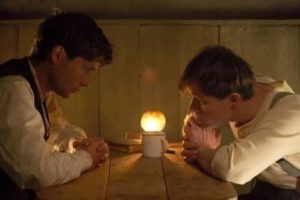
Pacing and Structure
The film’s pacing is deliberate, taking time to explore the gradual escalation of violence and the impact of the conflict on personal lives. This slow pacing may feel challenging for some viewers, as Loach prioritizes character development and emotional depth over action. The film’s structure reflects the steady buildup of tension, both politically and personally, and by the time the brothers are pitted against each other, the conflict feels inevitable and devastating.
Loach’s choice to focus on smaller, personal moments amidst the larger historical context gives the film a sense of intimacy. Scenes such as village gatherings, family discussions, and personal confrontations serve to ground the film in reality, emphasizing that the conflict’s impact reaches beyond the battlefield.
Reception and Impact
Upon its release, The Wind That Shakes the Barley received critical acclaim and won the prestigious Palme d’Or at the Cannes Film Festival. While some British critics criticized the film for its portrayal of British forces, accusing it of being overly sympathetic to the IRA, others praised Loach for his courage in addressing a painful and controversial chapter in Irish history.
The film has been lauded for its thought-provoking themes, powerful performances, and commitment to historical accuracy. For many viewers, it offers a deeply humanistic perspective on the struggle for independence, highlighting the sacrifices made by ordinary people and the moral complexities of revolution. The Wind That Shakes the Barley has since become a landmark film in Irish cinema and remains one of the most respected cinematic depictions of the Irish struggle for independence.
Conclusion
The Wind That Shakes the Barley is a haunting and beautifully crafted film that brings a complex and tragic period of Irish history to life. Ken Loach’s commitment to realism, combined with powerful performances from Cillian Murphy and Padraic Delaney, creates a deeply moving experience that goes beyond simple political allegory. The film’s exploration of family, loyalty, and the heartbreaking cost of civil war serves as a universal commentary on the human condition.
Loach’s approach to The Wind That Shakes the Barley refuses to simplify or romanticize the Irish struggle, making it a compelling and sobering look at the consequences of political ideals. This is not just a film about war, but about the people and relationships irrevocably altered by it. For anyone interested in history, human resilience, or the moral complexities of revolution, The Wind That Shakes the Barley offers a gripping and unforgettable cinematic experience.





